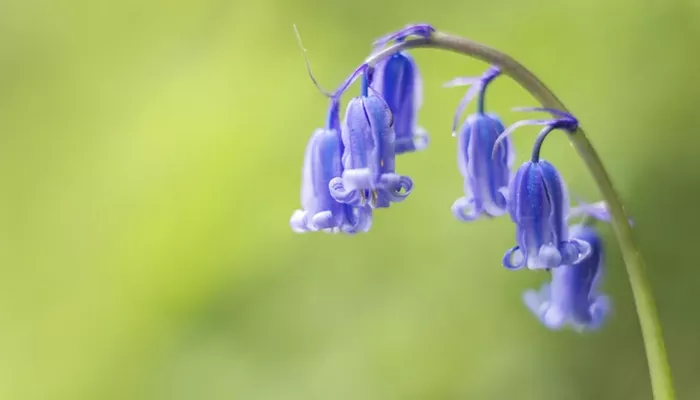Bluebells are beautiful perennial flowers that flourish between harsh winters and warm summers. They bloom in spring, adding vibrant color and inspiration for any gardener. The trumpet-shaped flowers attract a variety of pollinators, including birds, bees, and butterflies. Most bluebell varieties grow low to the ground, creating stunning ground cover during spring. Their relatively short lifespan allows space for other annual plants that thrive throughout the summer. When planted in mixed beds or along garden borders, bluebells can help create a flourishing garden that lasts well into autumn. Early bloomers, bluebells are an excellent choice for gardeners who want to kick-start their landscaping in the spring.
While many bluebell varieties enhance gardens, there is one that gardeners should avoid: the Spanish bluebell (Hyacinthoides hispanica). This variety can invade and disrupt local ecosystems, depending on your location. The Spanish bluebell is easy to identify due to its broader leaves, upright stems, and clustered flowers, contrasting with native bluebells that typically have drooping stems and flowers that tilt to one side.
The Invasive Spanish Bluebell
Spanish bluebells are found in the wild in several U.S. states, particularly Delaware, Virginia, and North Carolina. Although native to Spain, Portugal, and northwest Africa, they pose a threat to local flora by invading natural habitats. They can decrease the reproduction rates of native bluebell species through excessive cross-pollination. Their aggressive root systems allow them to produce and distribute a large number of seeds, which can damage surrounding plants.
Due to their aggressive nature, Spanish bluebells are more likely to escape cultivated areas and invade the wild, impacting local ecosystems significantly. When selecting seeds or planting bluebells, gardeners should be aware of which varieties are safe for their area. To maintain a healthy garden and ecosystem, it is advisable to avoid planting Spanish bluebells and consider native bluebell species instead.
Recommended Native Bluebell Varieties
When planting bluebells, it is essential to choose native species. One of the most popular bluebells in the U.S. is the Virginia bluebell (Mertensia virginica). Known for its delicate light blue petals, this flower is a favorite among American gardeners and horticulturists. Also called eastern bluebells, Roanoke-bells, Virginia cowslip, and lungwort oysterleaf, this variety blooms from March to August and is excellent for attracting pollinators. Many gardeners notice hummingbirds visiting their yards after planting Virginia bluebells.
Most native bluebells bloom from May to August, with early bloomers like the Virginia bluebell starting in March and the Rocky Mountain bluebell appearing in early April. States such as California, Arizona, and Wyoming host various native bluebells, including alpine, aspen, and tall fringe bluebells. Regardless of the species chosen, bluebells thrive best alongside other spring perennials like daffodils and trillium, or they can be layered in border beds with hostas and ferns. Incorporating native bluebells into your garden can boost pollinator and wildlife activity while beautifying your landscape with these lovely blue blooms.
Related topics:
- Revitalizing Campus Landscapes: Student Biodiversity Initiative Introduces Native Plants
- Electro-Agriculture: A Groundbreaking Technique That Lets Plants Thrive Without Ligh
- New Age Rituals Turning ‘Bad Energies’ to Smoke May Fuel Overharvesting of Wild Plants


